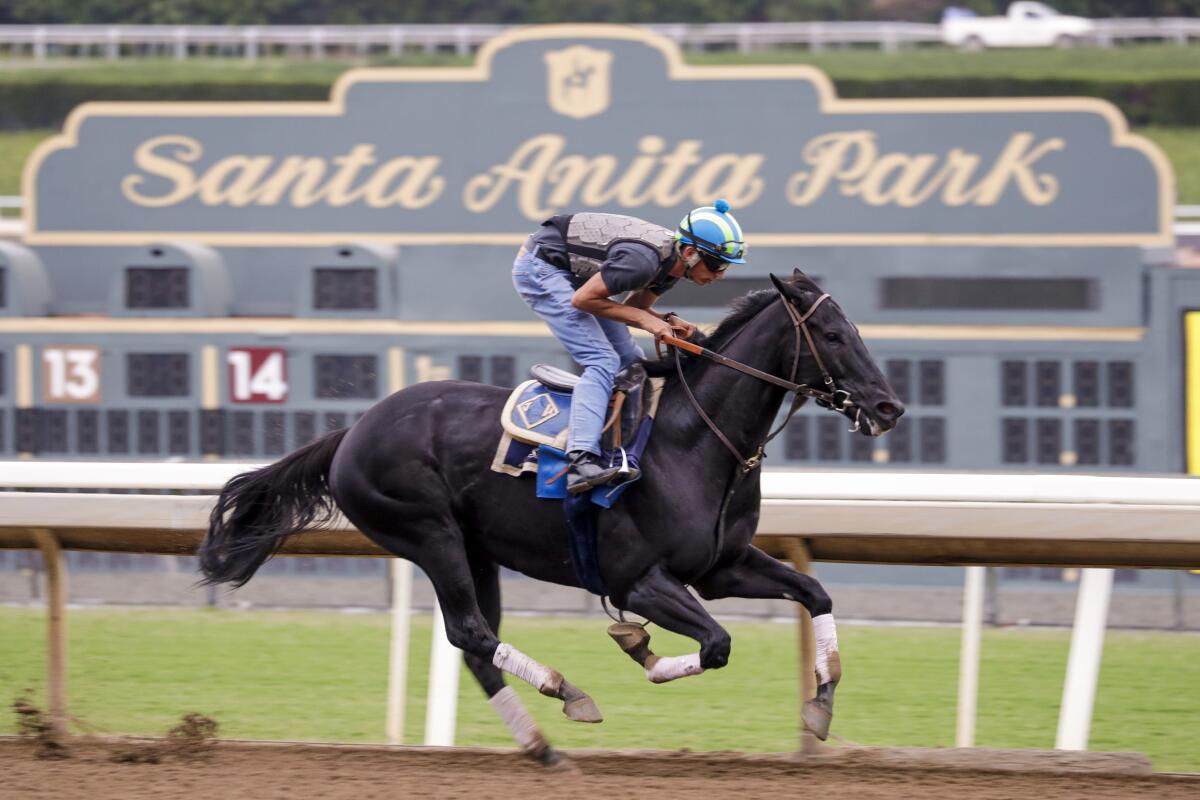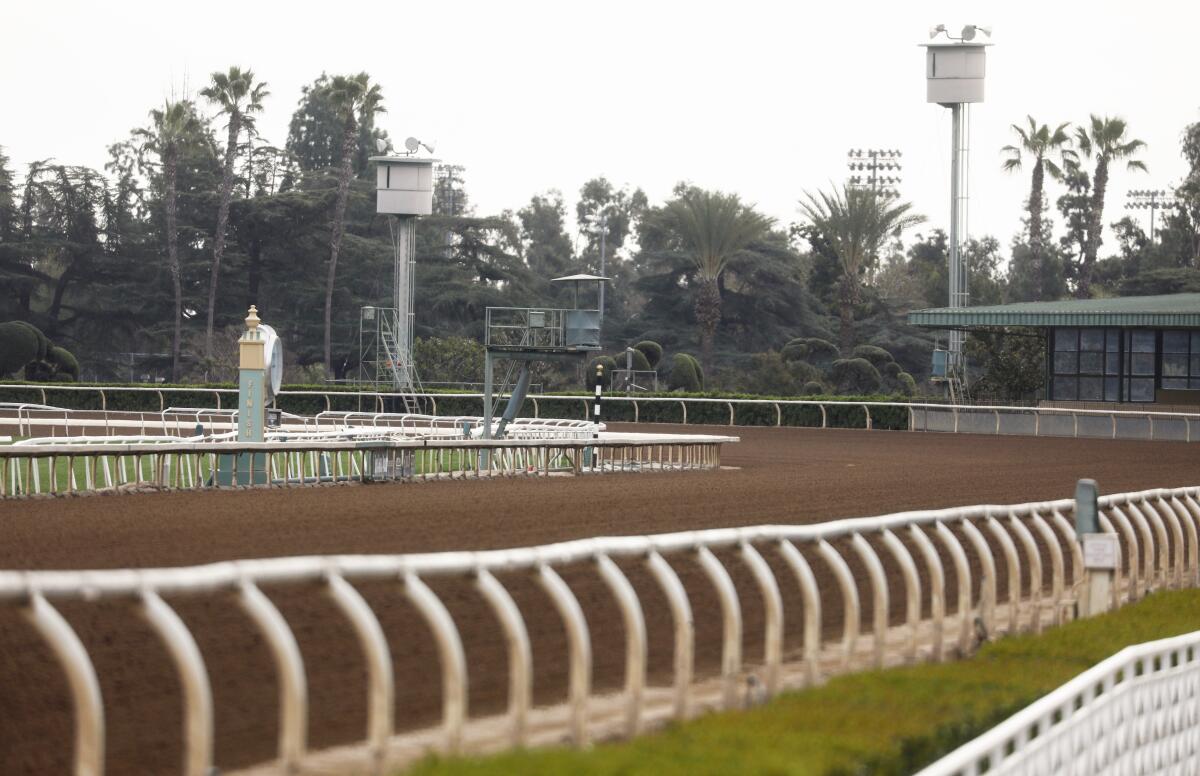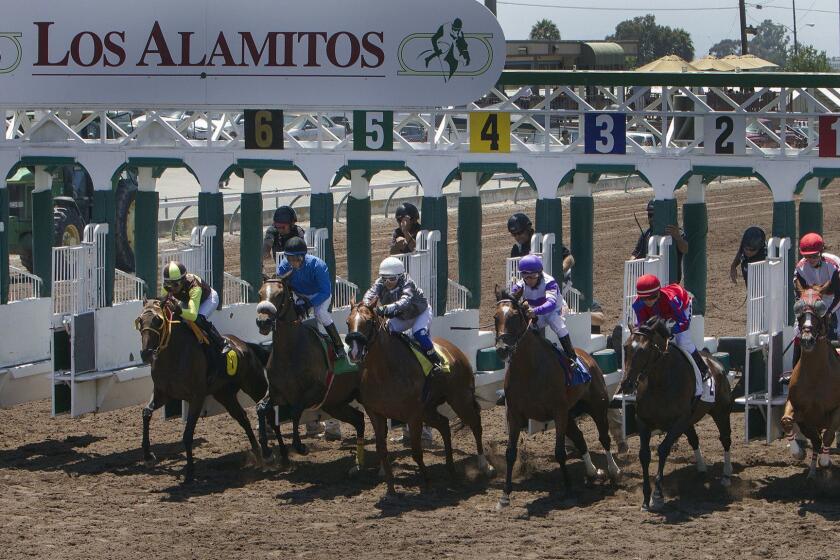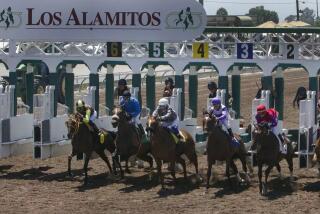Investigation into horse deaths at Santa Anita finds no unlawful conduct

The California horse racing industry at Santa Anita Park, reeling from a series of equine deaths and threats from state and national officials, was cleared of any criminal wrongdoing Thursday by the Los Angeles County district attorney’s office.
After a nine-month investigation, a special task force that looked into 30 deaths at Santa Anita during this year’s winter/spring meeting issued a 17-page report that “did not find evidence of criminal animal cruelty or unlawful conduct.”
The report did offer 27 recommendations for safety improvements, most of which have already been acted upon or were also recommended by the California Horse Racing Board.
The CHRB is also planning to issue a report, probably in January, that will include the results of necropsies on the horses.
“Greater precautions are needed to enhance safety and protect both horses and their riders,” said Dist. Atty. Jackie Lacey.
Stronach Group, which owns Santa Anita, said in a statement: “We thank District Attorney Lacey’s Office for their diligent work in this robust investigation into whether any conduct or conditions at Santa Anita Park affected the welfare of safety and horses.
“We are all committed to the same thing — the highest level of equine safety and welfare — and we will continue to do everything possible to promote equine and rider health and safety. And we are gratified that the District Attorney’s report into the conduct and conditions at Santa Anita Park found no evidence of misconduct.”
The report outlined four areas of concern: medication, track conditions, running injured horses and pressure to race.
The task force looked at the toxicology of 23 of the horses that died during the rainy season and found no illegal substances or drugs that were administered in excess of legal limits.
Running on sealed tracks, those that are compressed to keep moisture from penetrating the ground, was also cleared as a factor in the deaths by Mick Peterson, the country’s leading dirt surface expert who was a consultant for Santa Anita. The report said Peterson indicated “that it is not unsafe to run on a sealed track.”
Still, the CHRB has recommended that running on sealed tracks be eliminated for safety reasons. Santa Anita also must exercise 12 cancellations this coming meeting, which starts next Thursday, ostensibly so horses don’t have to run on bad weather days and possibly sealed tracks.
Looking at owners, trainers and jockeys at the track, the task force “did not uncover evidence indicating that [anyone] intentionally or knowingly raced an injured horse at Santa Anita.”
That conclusion was welcomed on the backstretch.
In a statement, the California Thoroughbred Trainers organization said it was “gratified by the findings of the district attorney’s office that no animal cruelty nor criminal activity took place at Santa Anita this past winter. From its outset, we welcomed the district attorney’s investigation. … We will always remain vigilant and fully participate in developing such best practices.”

The conclusions were not met as positively by animal rights activists, who initially called for the investigation.
“It’s beyond credible that the district attorney doesn’t see that trainers who medicate horses obviously know that they are injured and sore, so they should be criminally culpable if they then force them to race to their deaths,” said Kathy Guillermo, senior vice president of People for the Ethical Treatment of Animals.
The task force also exonerated the track of allegations it pressured trainers or jockeys to run when there were concerns about the track condition. “Investigators interviewed approximately 100 witnesses and found no evidence supporting this supposition. … Evidence indicates Santa Anita Park’s racing office encourages participation in racing but does not exert undue pressure on trainers to race their horses.”
This runs counter to reports in several media outlets, including the Los Angeles Times, quoting unidentified trainers who said they were pressured to run horses to fill fields early in the year.
In response to all the fatalities, Stronach Group instituted a series of safety, medication and veterinary reforms. It is being hailed by supporters as the start of a nationwide movement to improve horse and rider safety.
The increased veterinary oversight has, at times, proved to be effective. Medication changes, such as reducing race-day Lasix, which helps prevent horses from bleeding in their lungs, and efforts to ban the whip, or riding crop, have been pursued in an effort to regain public trust in a sport that is under a microscope.
Two horses died in the first race Saturday at Los Alamitos, adding to a string of fatalities this year at California tracks.
“Santa Anita Park and the California horse racing industry have embarked on implementing improved safety policies and practices,” the report said. “To date, enhanced safety efforts at Santa Anita Park have reduced the number of fatal racing and training incidents.”
Santa Anita suffered seven fatalities in its fall meeting, including Mongolian Groom in the $6-million Breeders’ Cup Classic. Last year, the track had four fatalities in the same time frame.
The recommendations offered in the report, in many ways, mirror a letter the CHRB sent to Gov. Gavin Newsom offering suggestions for reform. Both the report and the letter recommend greater veterinary record transparency, heightened reporting of fatalities and increased penalties, among other improvements. Some are already in place.
More to Read
Go beyond the scoreboard
Get the latest on L.A.'s teams in the daily Sports Report newsletter.
You may occasionally receive promotional content from the Los Angeles Times.












